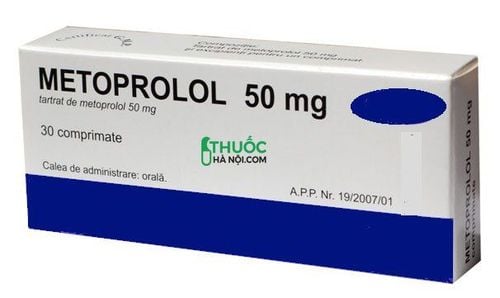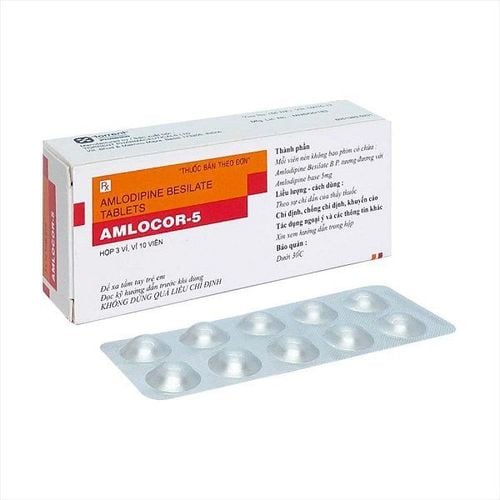This is an automatically translated article.
The article is professionally consulted by Specialist Doctor I Tran Quoc Vinh - Emergency Doctor - Department of Resuscitation - Emergency - Vinmec Nha Trang International General Hospital.Hypertrophic cardiomyopathy is a disease in which the thickening of part or all of the heart muscle leads to a decrease in the heart's ability to pump blood. Hypertrophic cardiomyopathy presents clinically characterized by three symptoms: chest pain, dyspnea, syncope. Sometimes, there are many cases where the disease has no obvious clinical signs. The disease poses a high risk of sudden death, especially in young people.
1. Symptoms of hypertrophic cardiomyopathy
Hypertrophic cardiomyopathy is a heart muscle disorder that disrupts the heart's ability to pump blood. Hypertrophic cardiomyopathy accounts for about 0.2% of all cardiovascular diseases. The disease can occur at any age, including children.The cause of an enlarged heart muscle is usually a genetic mutation, or an abnormal structure of the heart muscle fibers.
Risk factors that can cause the disease include:
Genetic factors. Due to drug use. People with myofiber disorders. The disease is characterized by a triad of symptoms:
Shortness of breath. Chest pain. Faint. Shortness of breath often occurs when patients exert themselves because in hypertrophic cardiomyopathy, it will cause diastolic dysfunction of the heart, mitral regurgitation or myocardial ischemia.
Chest pain is not caused by damage to the epicardial coronary vessels but by damage to the coronary microvasculature. On the other hand, when the heart muscle is enlarged, the volume of blood pumped to the body is also reduced, leading to a decrease in oxygen to the tissues. At this time, to ensure the functioning of the functional organs in the body, it is necessary to increase the oxygen demand as well as the myocardial oxygen demand. This also causes chest pain in people with hypertrophic cardiomyopathy.

In addition to the above three symptoms, patients may have accompanying symptoms such as fatigue, edema of the lower extremities, especially the feet, arrhythmia, changes in blood pressure.
Clinically, hypertrophic cardiomyopathy is divided into 2 different diseases:
Obstructive hypertrophic cardiomyopathy: Most cases of hypertrophic cardiomyopathy have septal thickening. Interventricular septum, which is the septum between the left ventricle and the right ventricle, blocks the outflow tract of the left ventricle (aortic valve area), so blood flow through the heart decreases, reducing cardiac output.
Nonobstructive Hypertrophic Cardiomyopathy: In clinical practice, sometimes patients have hypertrophic cardiomyopathy that does not cause significant reduction in cardiac blood flow. On the other hand, it causes thickening of the left ventricle leading to a decrease in the volume of the left ventricular chamber, which reduces blood flow to the body. That is why the disease is called nonobstructive hypertrophic cardiomyopathy.
2. Complications of hypertrophic cardiomyopathy
The most common complications of hypertrophic cardiomyopathy include:Sudden death, cardiac arrest According to studies based on actual clinical data, out of the total number of patients who died, about 1% of patients died. die each year from hypertrophic cardiomyopathy. Of these, 71% of patients were clinically asymptomatic and 16% of patients' deaths were related to strenuous activities.
Heart failure

Myocardial ischemia Occurs due to thickening of the heart muscle, reducing blood flow through the coronary arteries leading to ischemia of the heart muscle manifested by angina attacks.
Cardiac arrhythmias Common are atrial fibrillation, ventricular tachycardia and ventricular fibrillation. From there, it can increase the risk of blood clot formation causing heart attack, stroke, and cerebrovascular accident when the clot moves.
Cerebrovascular accident Mitral valve regurgitation When the heart muscle thickens, the volume in the heart chambers decreases, blood flows through the heart valves rapidly, increasing pressure on the heart valves, gradually causing regurgitation. .
Dilated cardiomyopathy In short, hypertrophic cardiomyopathy is one of the uncommon myocardial disorders. The disease is characterized by a triad of symptoms: chest pain, shortness of breath, and syncope. If not treated promptly, the enlarged heart muscle can cause dangerous complications such as heart failure, myocardial ischemia, cerebrovascular accident, even sudden death. Patients need to see a doctor as soon as they see abnormal signs in their body for timely diagnosis and treatment, to avoid complications later.
Doctor Tran Quoc Vinh has more than 6 years of working experience (starting in 2011) in the field of Emergency Medicine, he used to work at the Emergency Department of Khanh Hoa Provincial General Hospital, participated in medical examination and treatment. for many clinics in Nha Trang area before being a doctor of emergency department at Vinmec Nha Trang International General Hospital as it is today.
Please dial HOTLINE for more information or register for an appointment HERE. Download MyVinmec app to make appointments faster and to manage your bookings easily.
Reference source: Vietnam Society of Cardiology













